The extra scenario guide is at an end: here’s what you need to know about the six arenas of the second Super Smash Bros. Ultimate Fighters Pass
And finally the time has come to say goodbye: the arene that you will see in this episode are also the last scenarios of the guida a Super Smash Bros. Ultimate. In episodes number 16 and number 17 of the original project you will find the characters that accompany the various scenarios, with the relative prices. In fact, know that the levels included with the game ended last time: today we have fewer locations to talk about, as we are going to dissect the Fighters Pass Vol. 2. As a last appendix (but not necessarily the last guide dedicated to the game), finally, we will talk about the short jumps.
Preamble of the Appendix
Here’s what to expect from the Super Smash Bros. Ultimate arena and scenario guide. In each of these twelve events, we will talk about each scenario, its origins, who are the fighters who play at home and, in the case of the DLC, also the availability. No scenario, except for the aforementioned downloadable content, needs to be unlocked: everything is available right from the start of the game. Ironically, you may need to unlock historically associated characters at certain levels, but there is a guide for that too. Furthermore, as for the wrestlers, here too the images precede their respective section. Are you ready?
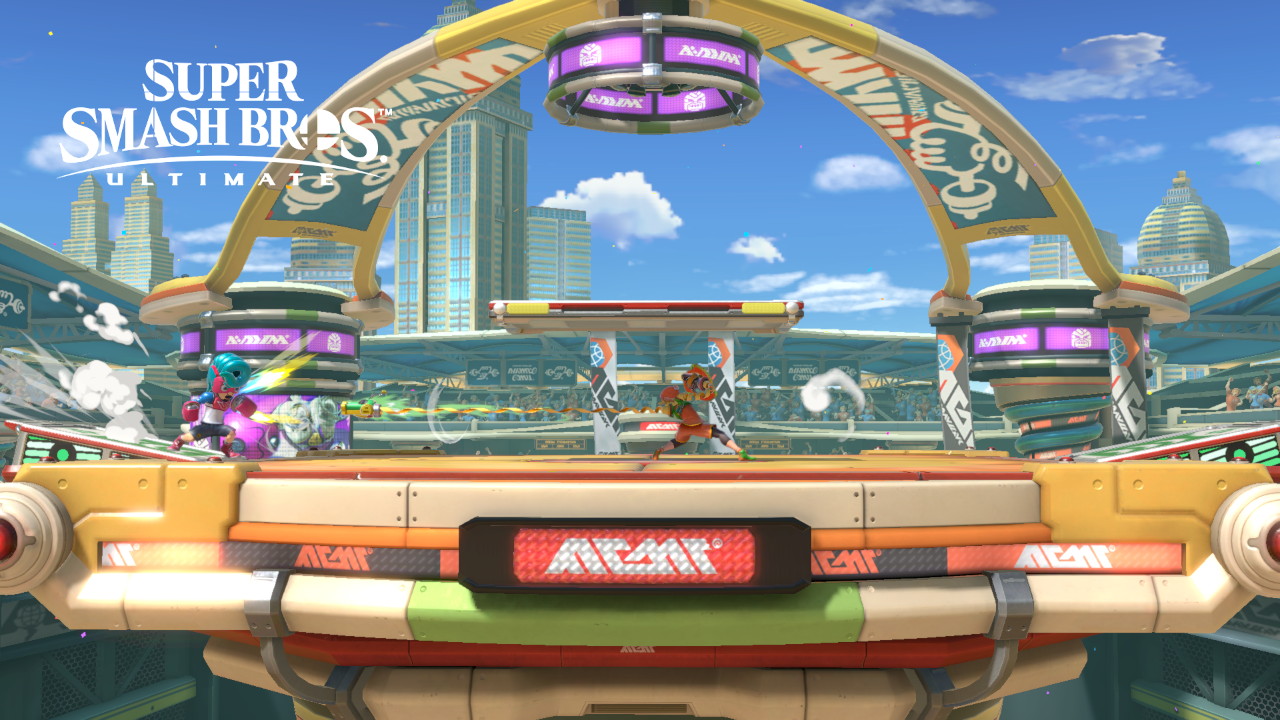
Boing Stadium – advanced guide to Super Smash Bros. Ultimate arenas and scenarios
The first of the arenas included with the second Fighters Pass is also the last of the first-party scenarios that we will see in the Super Smash Bros. Ultimate extra guide. Nonetheless, contrary to the collective snorts aroused by Byleth, as a first-party character Min Min has her own ranks of fans and Stadio Boing included with her remains spartan but fun. The main platform boasts two springs on the sides, but these only activate occasionally. At the top of the stage there are also two arches, which can interrupt upward launches. As for the platform that can be crossed in the center of the arena, we will only see it again with the spectacular conclusion of this DLC.
- Origin: ARMS
- Stage representative of: Min Min, Mii Fighter (with ARMS costumes)
- History: In reality, the Boing Stadium in the game of origin is the scenario of the character who is the real face of ARMS, or Spring Man (in English, the arena is called Spring Stadium). Since Spring Man is already an assistant in the game, Sakurai and his team have opted for the Boing Stadium instead of the Big Bowl. The drones that carry the various (and any) tools on the field also appeared in the original game, where they could heal the player who used them or injure the opponents.
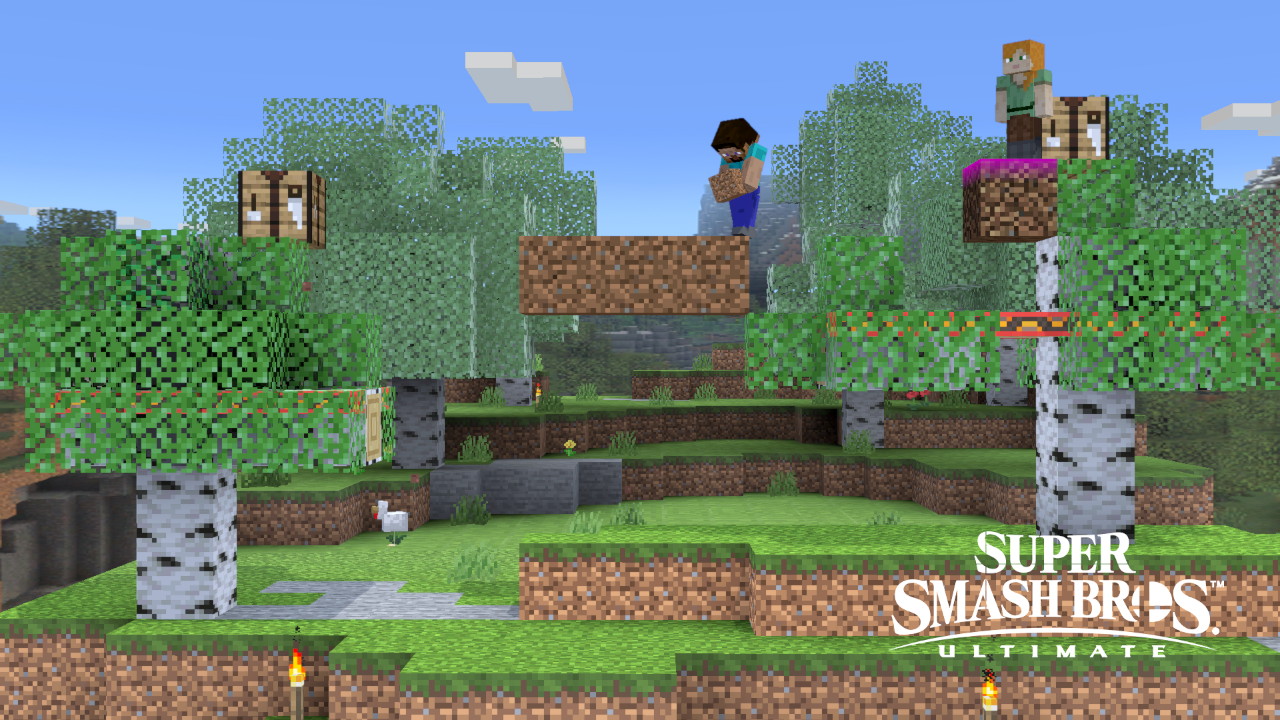
World of Minecraft – advanced guide to Super Smash Bros. Ultimate arenas and scenarios
Steve and Alex bring with them a window into their entire world, simply defined Minecraft world. As in the original game, many of the elements on the solid platform can be destroyed, but never be able to push themselves underground. When everything is destroyed, beyond the presence of a floating platform, the arena remains structurally identical to Final Destination. The biome which will be played in (between plains, birch forests, savannas, taiga, snowy tundras and sea cliffs) is random, unless held down a specific key when you choose it. Respectively, the keys are: L (plain), L + R (birch forest), L + ↑ (savannah), L + → (taiga), L + ↓ (snowy tundra) and L + ← (sea cliffs).
- Origin: Minecraft
- Stage representative of: Steve/Alex/Zombi/Enderman
- History: Minecraft is pure survival. The world is made of blocks, and by digging (mines) you get materials for the creation (craft) of objects, weapons, armor, walls and so on. While the game world is customizable, you first need to get to grips with the uncompromising day / night cycle. In fact, when the sun goes down, monsters abound. A curiosity: the stage was conceived with Steve’s excavation mechanics, and this led Sakurai to put his hand to all the other arenas we have described so far. Playing the various blocks on the screen can be so burdensome for the console that it requires a static background (as you may have noticed). Not only that: explosive houses can bring even the best computers to their knees, which is why Steve’s Final Smash (which consists of this) is mostly pre-recorded footage!
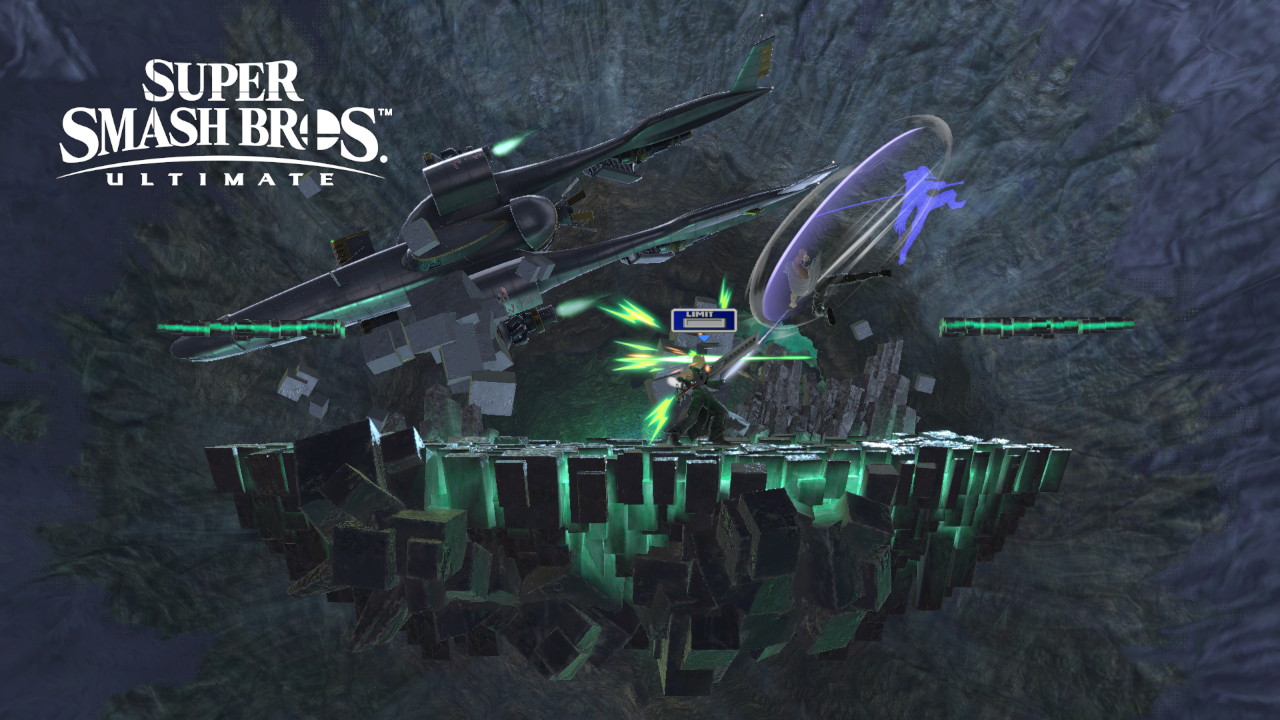
Northern Cavern – advanced guide to Super Smash Bros. Ultimate arenas and scenarios
With a layout consisting of one solid platform and two traversable on the edges, you would think the arena included with Sephiroth is viable in the competitive arena. But no. Due to a “too distracting” background, North cave is banned from tournaments. Unfortunately this is the way life goes.
- Origin: Final Fantasy VII
- Stage representative of: Cloud, Sephiroth
- History: The “distracting background” takes up, without naming names or anything else, the entire last dungeon (better known by the English name from the original game, Northern Cave). The shorter version is this: the supersoldier Sephiroth, crazy before the events of the game, is convinced that he has to cause the destruction of the planet Gaia with a colossal meteorite due to the plan of JENOVA, an alien creature whose genes have ended up in the body of the terrorist. Cloud and company have other plans, and before they finish… in the image we used to represent Sephiroth in Episode 16 of the guide, if you can say so, Aerith invoked the planet’s life flow to stop the Meteor. The result of her efforts is part of the play of light in the background before the loop starts again.
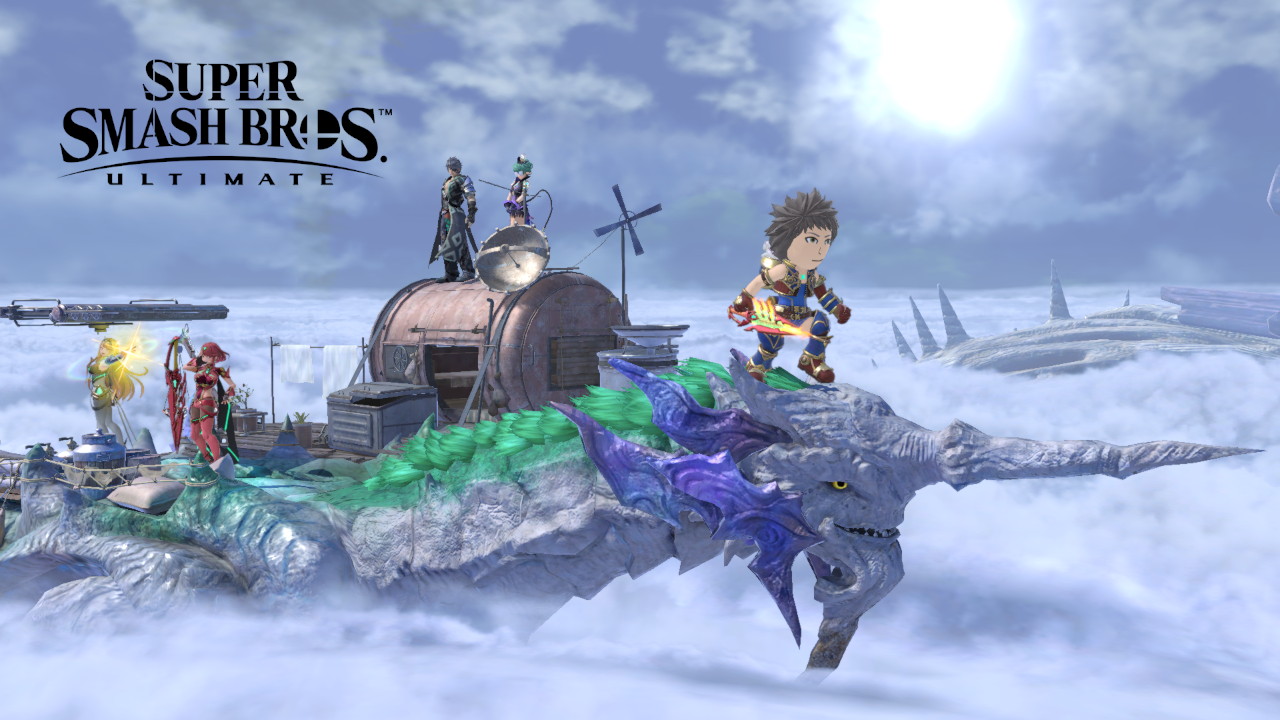
Alrest Sea of Clouds – Super Smash Bros. Ultimate arena and scenario advanced guide
Contrary to the colossal agglomeration of platforms that is the Plain of Gaur, Xenoblade Chronicles 2 was represented with a more contained level design. Pyra and Mythra carry the Alrest Sea of Clouds, that is the back of Azurda (or “grandfather”, as Rex calls him), who will comment on the progress of the battle. From time to time the colossal creature will look away, turning its neck into a potential trap for less attentive players. For the rest, there is not much to add. Just a floating platform in the left half of the scenario, and a slight slope up to Azurda’s neck.
- Origin: Xenoblade Chronicles 2
- Stage representative of: Pyra and Mythra, Shulk (counting Xenoblade Chronicles 2 DLC), Mii Swordsman (Rex costume included with the first Fighters Pass)
- History: Rex lives on Azurda’s back early in the game, but during the events of Xenoblade Chronicles 2 the titan fails before the protagonist meets Pyra. At the end of the game Azurda regenerates, but without Rex’s house on her back. The various cameos in the scenario are supporting actors known to Rex throughout the game.
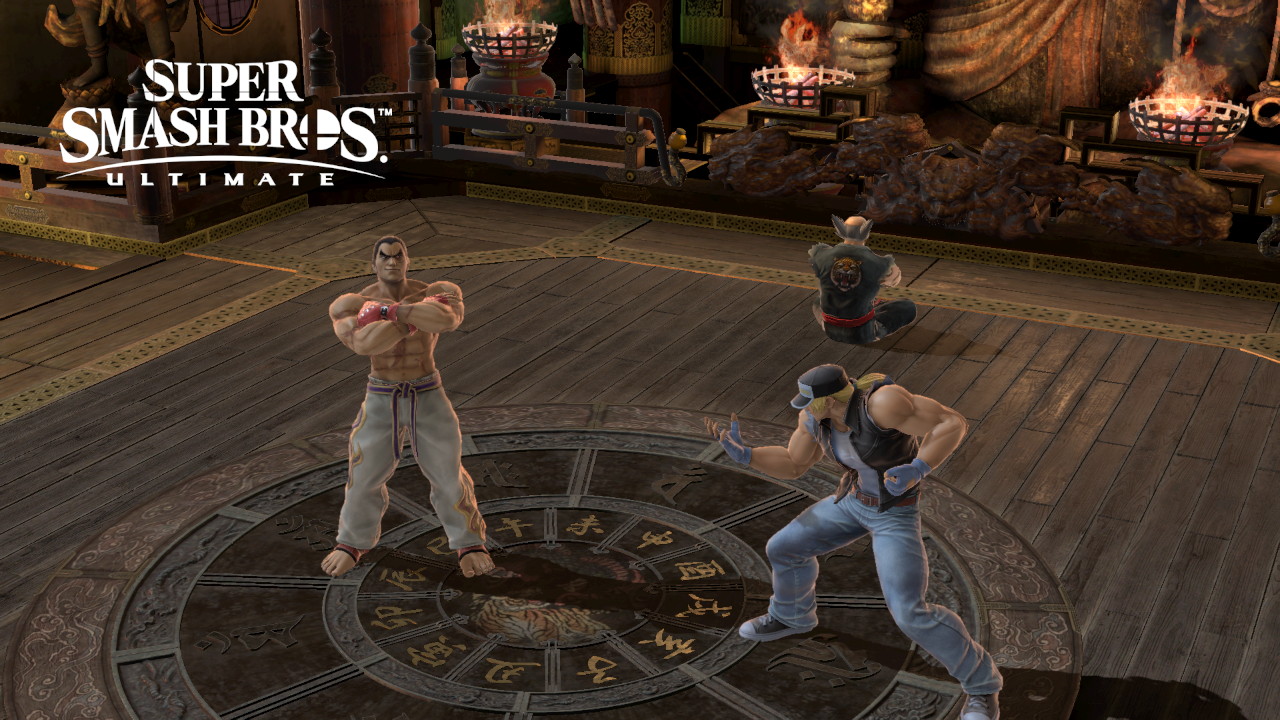
Mishima Dojo – advanced guide to Super Smash Bros. Ultimate arenas and scenarios
Included with Kazuya Mishima is also the dojo of his “beloved” father Heihachi. Compared to the King of Fighters Stadium, the Mishima Dojo offers a more alternative… let’s say “homemade”. This is a main platform very close to the outer borders, with walls and ceiling to be destroyed to inflict a KO. Whenever this happens (the KO, of course; not the renovation of the house) Heihachi, sitting in the background, stands up to pose. The structure repairs itself after some time.
- Origin: Tekken 7
- Stage representative of: Kazuya, Mii Wrestler (Heihachi costume)
- History: The temple, including the Acala statue in the background, faithfully reproduces its Tekken 7 counterpart… demolitions aside. Curiously, the aged version of Heihachi coexists with its younger counterpart thanks to a Mii costume. Masahiro Sakurai has chosen Kazuya to avoid the two easier alternatives (his father Heihachi is a parsley as he has already appeared in PlayStation All-Stars Battle Royale, while his son Jin is now the face of the franchise). The ideograms in the background are the names of Heihachi and his deceased wife Kazumi, Kazuya’s mother.
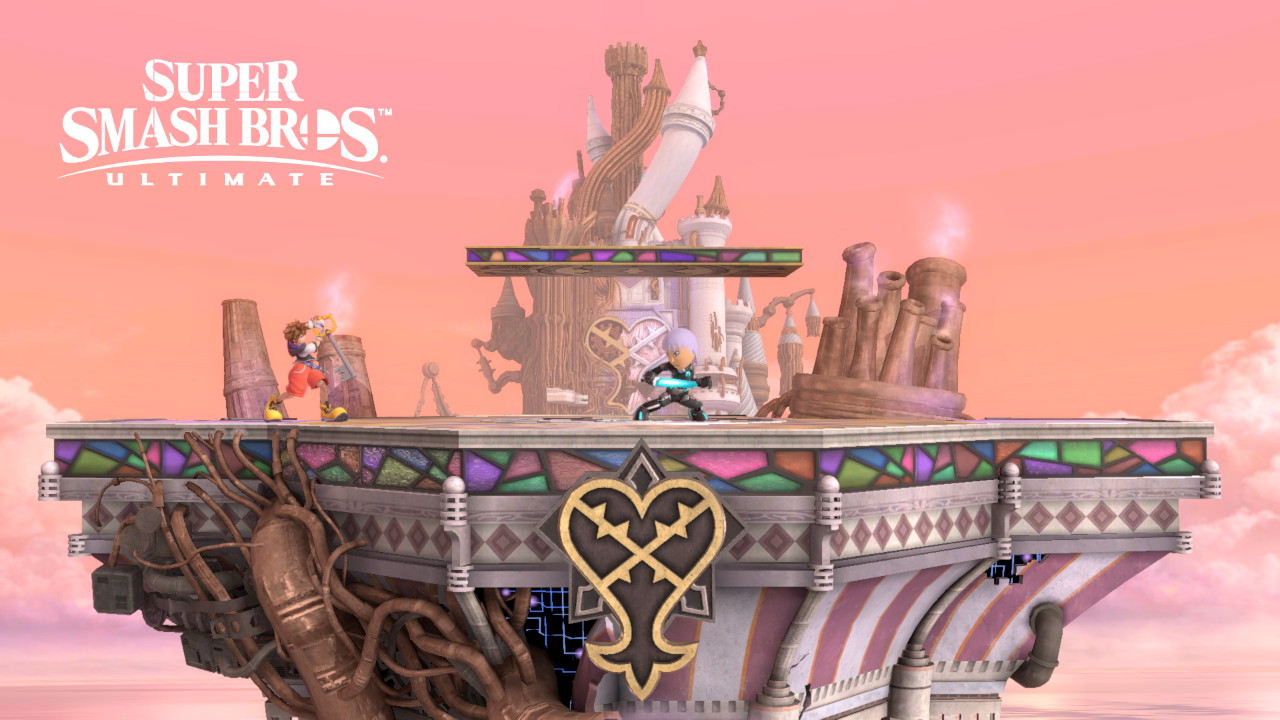
The Dark Fortress – Super Smash Bros. Ultimate arena and scenario advanced guide
You know what we said about the Boing Stadium? Because what we have said about its layout also applies to the Dark Fortress, included with Sora. This is a solid platform accompanied by one that can be crossed in the center. The layout remains simple even when the background moves from the eponymous castle to the stained glass windows of Plunge into the Heart. Ironically, while the competitive community has received (in part) very coldly the most voted character in the Fighter Ballot, his arena is a genuine wink at the simple level design that is such a furore in tournaments.
- Origin: Kingdom Hearts (2002)
- Stage representative of: Sora (mostly the first costume)
- History: This location, chronologically, was born as the Radiant Garden and in the canon of Kingdom Hearts this is where many counterparts of the characters taken from Final Fantasy once lived. Following the corruption of Terra at the end of Kingdom Hearts: Birth By Sleep, Master Xehanort, using him as a puppet, performed experiments on the human heart that led to a total invasion by the Heartless demons. During the events of the first Kingdom Hearts, the Dark Fortress (once the castle of Ansem the Wise) is used by the Maleficent witch for her original plan. Maleficent left the Enchanted Domain (world of Sleeping Beauty, 1959) precisely following a “advice” from Master Xehanort. The Dark Fortress is restored to its former glory during the events of Kingdom Hearts II.
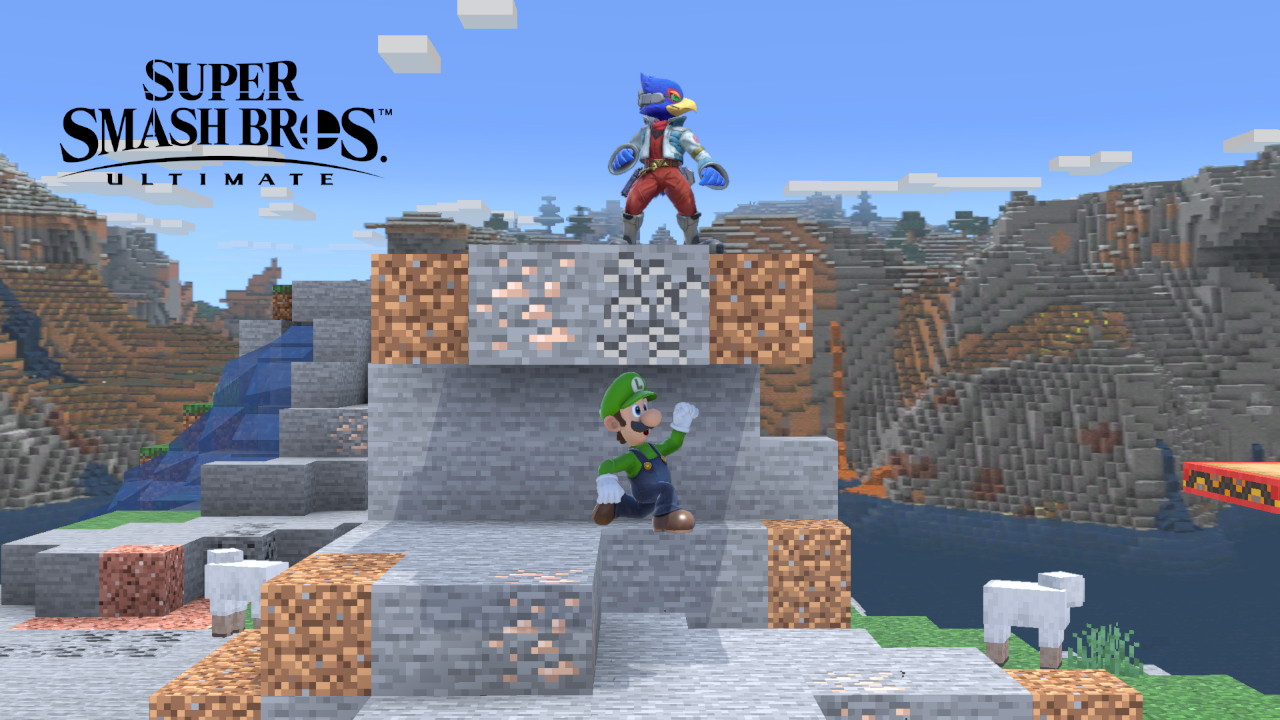
Twelfth and final study in the appendix: Short jumps
Plan with the handkerchiefs: we could also change our mind and dedicate a further guide, but after having described over one hundred arenas and scenarios it is time to close the accounts with Super Smash Bros. Ultimate. And what better way than a gimmick to use free air strikes? You may have noticed that jumping and using targeted air strikes (aka left analog lever + A) is difficult when there are characters like Luigi and Falco jumping very high. However, you can use the X or Y keys to jump instead of sprinting up with the left stick. Pressing the two keys together, however, will result in a Short jump: use it to put to good use all those moves that Masahiro Sakurai has demonstrated with ease during his presentations!
Now it’s up to you to tell us yours: did our guide help you? Have you found the various easter eggs and / or quotes that we have included in the images? Would you like to expand it all with an extra bet to see other techniques? Let us know below, and as always don’t forget to stay on TechGameWorld.com for all the most important news for gamers and more. For your purely gaming needs, you can instead find the best discounts in digital format on Instant Gaming.







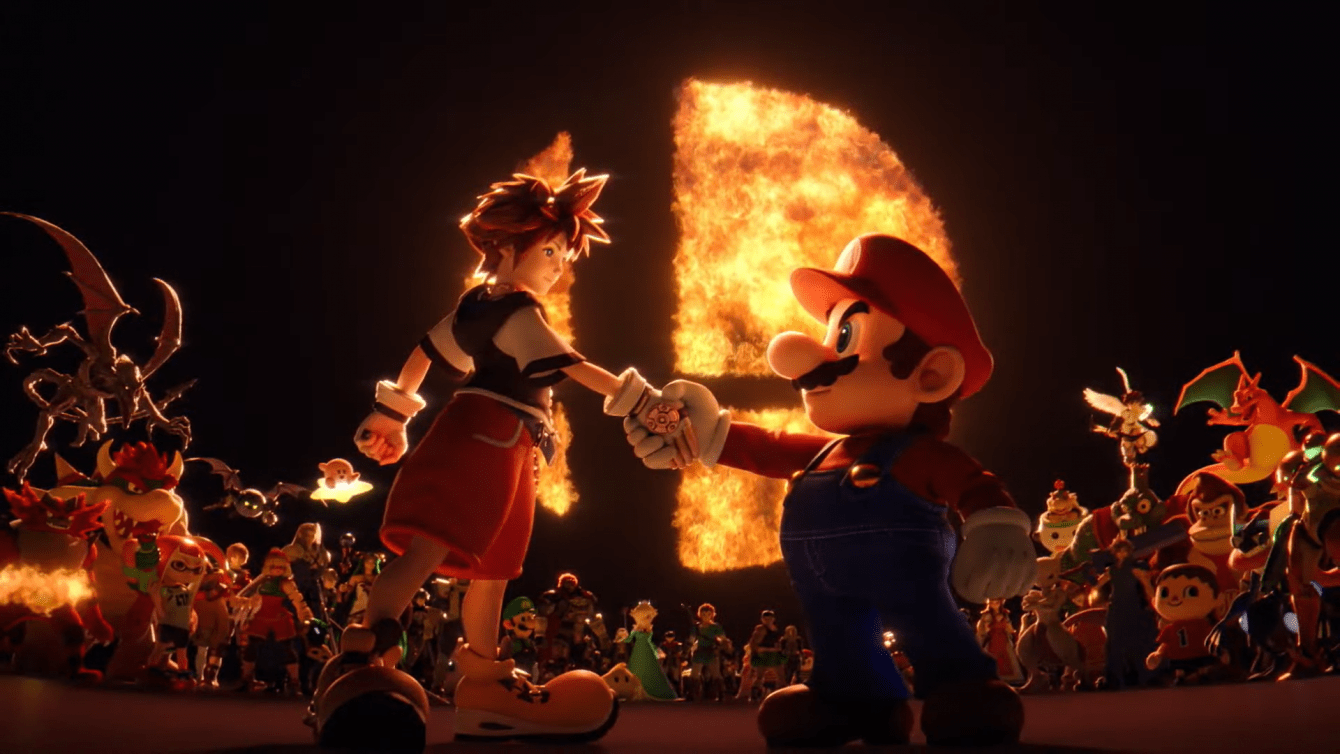




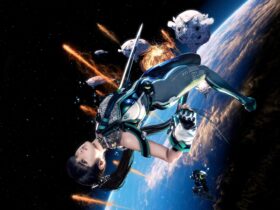
Leave a Reply
View Comments